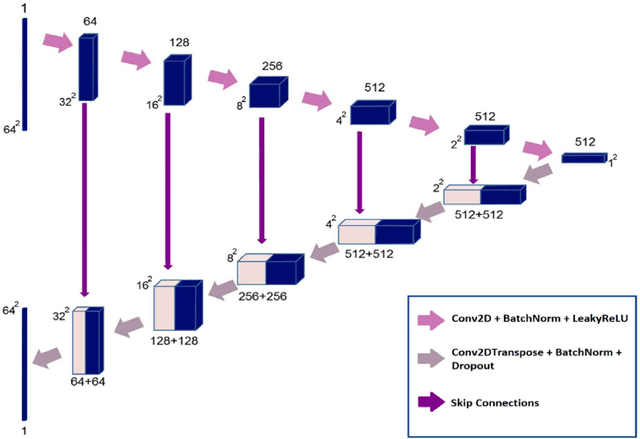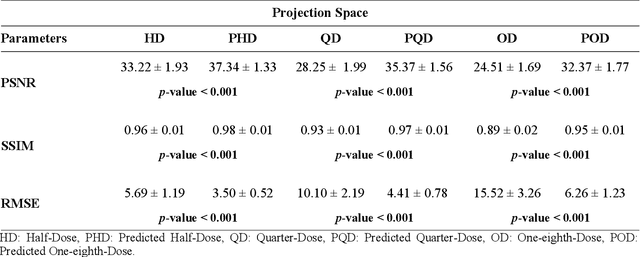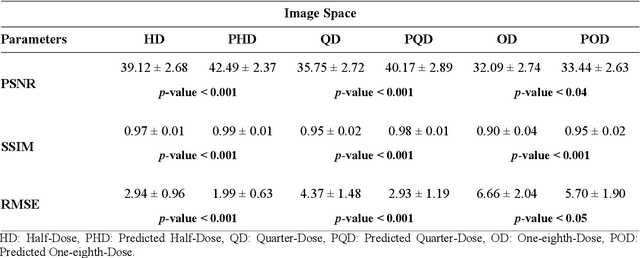Deep learning-based noise reduction in low dose SPECT Myocardial Perfusion Imaging: Quantitative assessment and clinical performance
Paper and Code
Mar 22, 2021



Clinical SPECT-MPI images of 345 patients acquired from a dedicated cardiac SPECT in list-mode format were retrospectively employed to predict normal-dose images from low-dose data at the half, quarter, and one-eighth-dose levels. A generative adversarial network was implemented to predict non-gated normal-dose images in the projection space at the different reduced dose levels. Established metrics including the peak signal-to-noise ratio (PSNR), root mean squared error (RMSE), and structural similarity index metrics (SSIM) in addition to Pearson correlation coefficient analysis and derived parameters from Cedars-Sinai software were used to quantitatively assess the quality of the predicted normal-dose images. For clinical evaluation, the quality of the predicted normal-dose images was evaluated by a nuclear medicine specialist using a seven-point (-3 to +3) grading scheme. By considering PSNR, SSIM, and RMSE quantitative parameters among the different reduced dose levels, the highest PSNR (42.49) and SSIM (0.99), and the lowest RMSE (1.99) were obtained at the half-dose level in the reconstructed images. Pearson correlation coefficients were measured 0.997, 0.994, and 0.987 for the predicted normal-dose images at the half, quarter, and one-eighth-dose levels, respectively. Regarding the normal-dose images as the reference, the Bland-Altman plots sketched for the Cedars-Sinai selected parameters exhibited remarkably less bias and variance in the predicted normal-dose images compared with the low-dose data at the entire reduced dose levels. Overall, considering the clinical assessment performed by a nuclear medicine specialist, 100%, 80%, and 11% of the predicted normal-dose images were clinically acceptable at the half, quarter, and one-eighth-dose levels, respectively.
 Add to Chrome
Add to Chrome Add to Firefox
Add to Firefox Add to Edge
Add to Edge